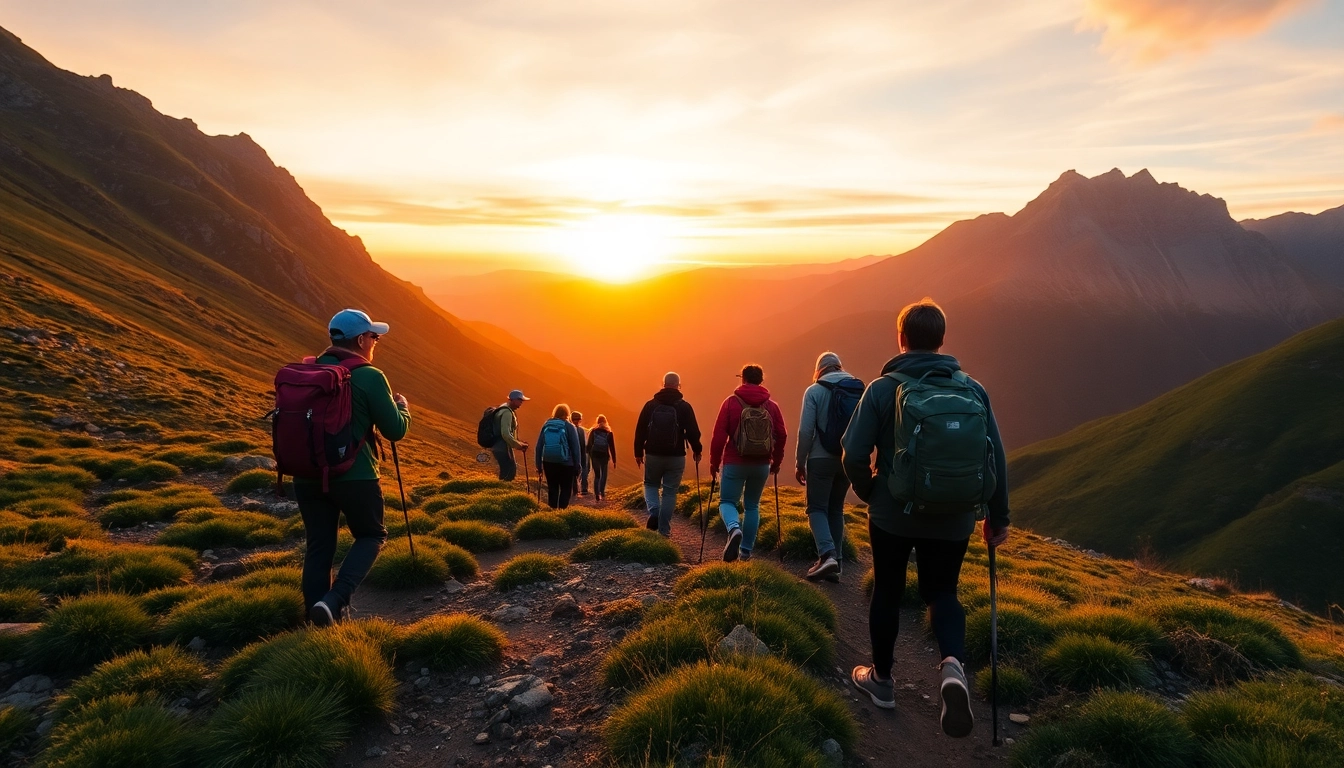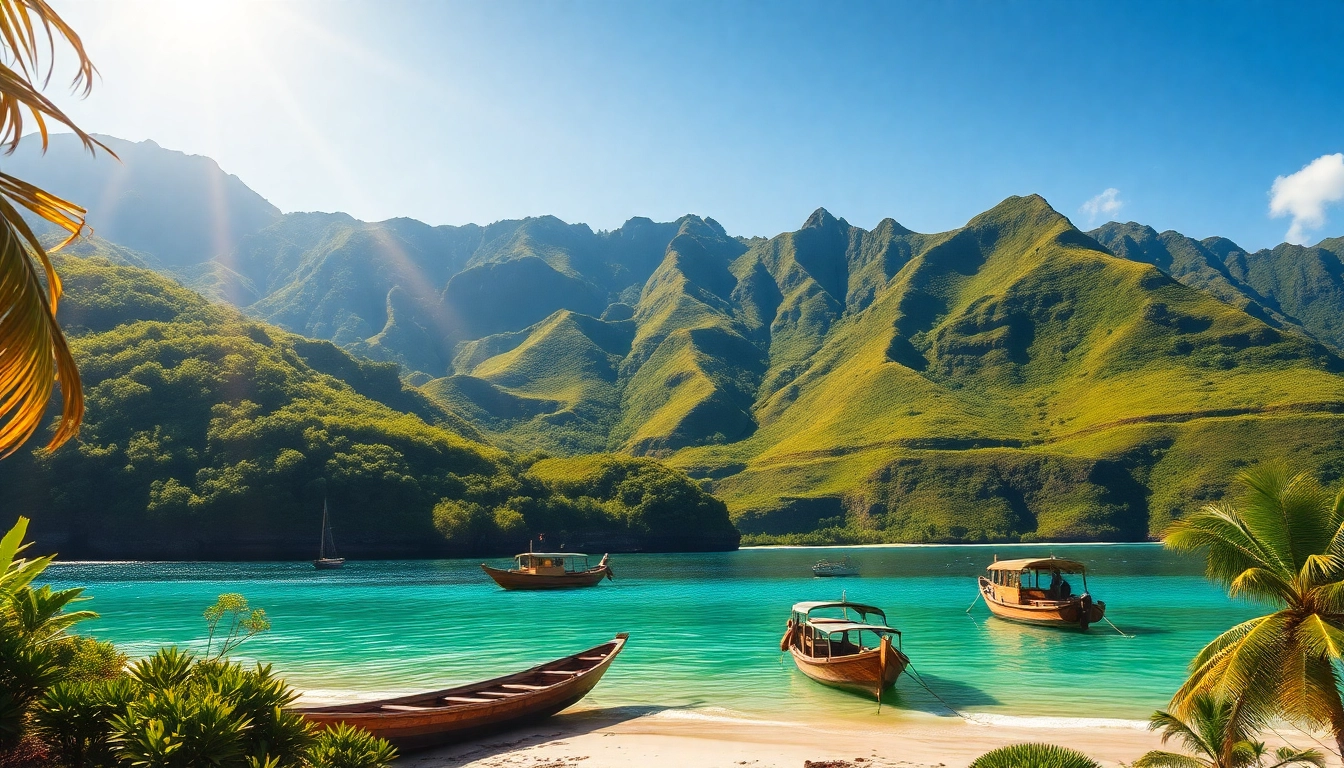Introduction to Hiking: Benefits and Basics
Hiking is more than just a leisurely walk through nature; it is a timeless activity that offers a multitude of physical, mental, and environmental benefits. As an accessible form of outdoor recreation, hiking allows individuals to connect with nature, improve their health, and explore scenic landscapes worldwide. Whether you are a beginner seeking to experience the serenity of a forest trail or an experienced trekker aiming for challenging mountain paths, understanding the fundamentals of hiking is essential for maximizing enjoyment and safety. For those interested in discovering wonderful trails in Indonesia, especially in scenic destinations like Lombok, a well-prepared approach to hiking can turn an ordinary walk into an extraordinary adventure.
To begin your journey into hiking, it’s important to grasp what constitutes a hike, why it matters, and how it can enrich your life. Learn more about the significance of hiking as a sustainable and health-promoting activity on hike and beyond.
What Is Hiking and Why It Matters
Hiking is broadly defined as a long, vigorous walk, especially on trails or footpaths in natural environments. According to Wikipedia, hiking developed as a recreational activity in Europe during the 18th century and has since become a globally cherished pastime. Unlike casual walking, hiking usually involves traversing varied terrains such as mountains, forests, or deserts, demanding physical effort and navigational skills.
Beyond its physical benefits, hiking fosters mental well-being by reducing stress, enhancing mood, and encouraging mindfulness. It provides an escape from daily pressures, allowing outdoor enthusiasts to reconnect with themselves and nature. The broader significance of hiking extends to promoting environmental awareness and fostering conservation efforts, as hikers develop a deeper appreciation for natural landscapes and ecological sustainability.
In Indonesia, with its diverse topography and rich biodiversity, hiking offers unique opportunities for exploration, adventure, and cultural immersion, making it an important activity for both locals and travelers eager to experience the country’s natural beauty.
Popular Types of Hikes and Terrain Challenges
Hiking can be categorized into various types based on terrain, difficulty, and purpose. Understanding these categories helps hikers choose suitable routes aligned with their skill levels and interests.
- Day Hikes: Short, accessible trails usually completed within a few hours, ideal for beginners and families. Examples include forest walks or coastal trails.
- Overnight or Multi-day Hikes: Extended adventures that require camping or bivouacking overnight. These hikes demand more preparation, physical endurance, and logistical planning.
- Mountain Treks: Challenging ascents on rugged terrains, often involving steep inclines, rocky paths, and high altitudes, such as the famous trails around Mount Rinjani in Lombok.
- Urban Hikes: Exploring city parks, waterfronts, and urban landscapes, combining adventure with cultural exploration.
Terrain challenges vary from gentle forest pathways to steep mountain slopes, rocky terrains, and even snow-covered routes. Each terrain requires specific techniques and gear. For example, rocky trails necessitate sturdy footwear and careful footing, while dense forests call for navigation skills and awareness of wildlife.
Indonesian landscapes, especially in regions like Lombok, present a wide array of terrain challenges suitable for all levels—from the gentle rice paddies and coastal trails to the demanding ascent of Mount Rinjani, Indonesia’s second-highest volcano.
Starting Your Hiking Journey Safely
Embarking on a hike requires mindful preparation to ensure safety and enjoyment. Start by assessing your fitness level, choosing appropriate trails, and informing others of your plans. It is advisable to begin with shorter, well-marked routes and gradually progress to more challenging hikes as experience grows.
Always check weather conditions before heading out; weather can change rapidly in mountainous or coastal areas. Carry essential gear, including navigation tools, sufficient water, sun protection, and a basic first-aid kit. Acclimate yourself to the environment gradually, especially in high-altitude regions like Lombok’s mountains.
Joining local hiking groups or guided tours can enhance safety, provide valuable insights, and enrich your outdoor experience. Remember, respecting nature and adhering to Leave No Trace principles help preserve the beauty of the landscapes for future generations.
Essential Hiking Gear and Preparation
Vital Equipment for All Skill Levels
Proper gear is fundamental for a successful hike. While requirements vary depending on terrain and duration, some essentials are universal:
- Backpack: Comfortable and appropriately sized for your hike length.
- Navigation Tools: Map, compass, or GPS device to avoid getting lost.
- First Aid Kit: Basic supplies including bandages, antiseptics, and any personal medications.
- Lighting: Headlamp or flashlight, especially for early morning or late evening hikes.
- Food and Water: Nutritious snacks, sufficient water, and a portable water filter or purification tablets.
- Protection Gear: Sunblock, insect repellent, hat, sunglasses, and weather-appropriate clothing.
Advanced hikers may supplement their gear with trekking poles, multi-tools, and two-way radios for communication.
Choosing the Right Footwear and Clothing
Footwear significantly impacts comfort and safety during your hike. Invest in quality waterproof hiking boots or shoes that offer good ankle support, traction, and durability. The choice depends on terrain; for rugged rocky paths, robust boots are recommended, while lighter shoes suffice for flatter trails.
Clothing should be layered to adapt to changing weather conditions. Moisture-wicking base layers, insulating mid-layers, and waterproof jackets ensure comfort and protection. In tropical regions like Indonesia, lightweight, breathable fabrics help prevent overheating and skin irritation.
Prioritize moisture management and UV protection, especially in hot environments. Proper footwear and clothing choices reduce the risk of blisters, hypothermia, and sunstroke.
Packing Tips for Comfort and Safety
Pack smart by organizing your gear efficiently. Use lightweight packing cubes or bags to categorize essentials like clothing, food, and safety equipment. Keep important items accessible—such as navigation tools and snacks—so you can reach them quickly during the hike.
Remember to carry extra layers, rain gear, and a portable power bank for electronic devices. Hydration packs or bottles should be filled adequately, and trash should be carried out to maintain environmental integrity.
Technique and Safety Tips for Hikers
Proper Hiking Techniques for Various Terrains
Adapt your walking style based on terrain. When ascending or descending steep slopes, lean forward slightly and use trekking poles for stability. On rocky or uneven surfaces, take deliberate and careful steps to avoid slips and falls.
Maintain a steady pace, conserve energy, and avoid overexertion. Rest periodically, hydrate regularly, and be mindful of your limits. Uphill sections benefit from short, frequent breaks, while downhill segments require controlled, mindful walking to prevent joint strain.
Wildlife and Environmental Precautions
Respect local wildlife by observing from a distance and avoiding disturbances. Be cautious of potentially dangerous animals such as snakes, insects, or larger mammals native to Indonesian forests and mountains.
Follow environmental guidelines: do not pick plants, disturb habitats, or leave waste behind. Use designated trails to minimize ecological impact, and participate in conservation efforts wherever possible.
Navigation and Emergency Preparedness
Proficiency in navigation skills is vital. Use maps and compasses or digital GPS devices, and familiarize yourself with the trail beforehand. Carry extra batteries and backup navigation methods.
Prepare for emergencies by understanding basic first aid and carrying communication devices like a fully charged mobile phone or satellite communicator. Know emergency exit routes and the location of the nearest help centers.
Planning Your Hike: Routes and Conditions
Selecting Suitable Trails in Indonesia
Indonesia offers a vast array of hiking opportunities, from the lush rainforests of Sumatra to the volcanic landscapes of Java and Lombok. When choosing routes, consider your fitness level, experience, and the trail’s difficulty.
In Lombok, popular hikes include Mount Rinjani—one of Southeast Asia’s highest volcanoes—and scenic coastal trails along the Gili Islands. Research trail conditions, permit requirements, and cultural considerations to plan successfully.
Weather Considerations and Timing
Weather greatly influences hike safety and enjoyment. Tropical climates like Indonesia experience distinct wet and dry seasons. The dry season (typically May to September) offers clearer skies and more manageable trail conditions, while the rainy season (October to April) can bring flooding and slippery paths.
Plan hikes during favorable weather windows, and always monitor weather forecasts. Prepare for sudden storms or temperature fluctuations, particularly in mountain regions.
Mapping Tools and Resources for Hikers
Utilize digital mapping tools such as AllTrails, Gaia GPS, or local Indonesian resources to find trail maps, reviews, and GPS navigation. Offline maps are essential when signal is limited. Local guides and tourism offices can also provide valuable, up-to-date trail information and safety advice.
Maximizing Your Hiking Experience
Health Benefits and Personal Growth
Regular hiking improves cardiovascular health, strengthens muscles, and boosts endurance. It also enhances mental resilience, reduces anxiety, and fosters a sense of achievement. Many hikers find that immersing in nature fosters creativity and personal reflection.
Hiking encourages discipline, planning, and adaptation—valuable traits that translate to everyday life. For travelers exploring Indonesia, hiking offers opportunities for cultural exchange and learning about local communities and traditions.
Environmental Responsibility and Leave No Trace
Preserving the beauty of Indonesian landscapes requires responsible outdoor practices. Follow Leave No Trace principles: minimize campfire impact, pack out all waste, respect wildlife, and stay on designated trails. Supporting eco-friendly accommodations and services also benefits local communities and conservation initiatives.
By adopting sustainable practices, hikers contribute to ecological health and ensure future generations can enjoy these natural wonders.
Sharing Your Adventure and Community Engagement
Document your hikes through photos, blogs, or social media to inspire others and share experiences. Connecting with local hiking groups or conservation projects enhances knowledge and creates a supportive community.
Participating in trail cleanup events or volunteering with environmental organizations further enriches your hiking journey and promotes sustainable tourism in Indonesia.

